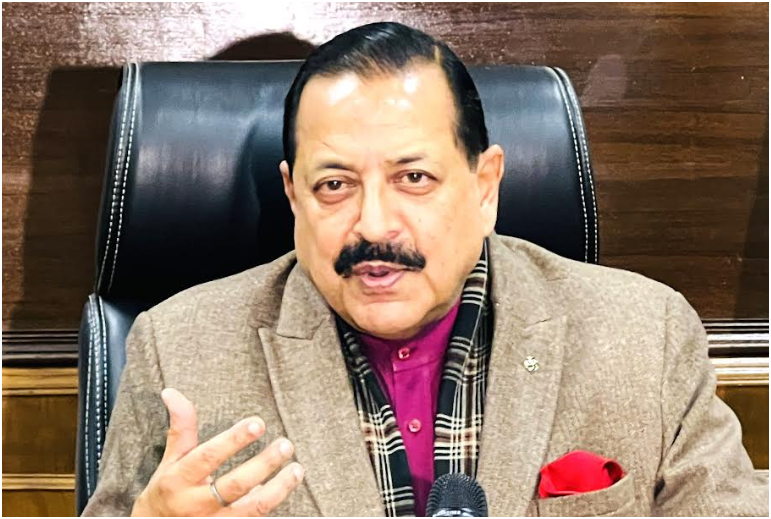CHENNAI, Dec 29: Describing the PSLV-C60 Spadex Mission as a landmark project, Union Minister of State (Independent Charge) for Science and Technology, Dr Jitendra Singh, highlighted its importance in showcasing India’s capability in space docking technology.
With this advancement, India is poised to become the fourth nation, following the US, Russia, and China, to achieve proficiency in this critical technology necessary for future interplanetary missions.
“The year-end mission by ISRO, scheduled for December 30, is set to achieve the remarkable goal of docking or merging two satellites in Space,” he mentioned, as per a PIB release.
The project is officially titled “Space Docking Experiment” (SpaDeX), he added.
The entire nation is eager as ISRO prepares to reach a significant milestone in Space technology, he stated.
In an exclusive interview with the media, Dr Jitendra Singh explained that the upcoming SpaDeX mission aims to successfully dock two satellites in Space, a feat only a limited number of countries have accomplished. Scheduled for December 30, 2024, this ambitious undertaking will utilize indigenous technology known as the “Bharatiya Docking System.”
“SpaDeX” will be a historic accomplishment, showcasing Indian expertise in spacecraft docking technology.
This mission, as noted by Dr Jitendra Singh, will signify India’s entry into a select group of nations capable of mastering space docking. Utilizing a unique approach, the PSLV rocket will transport two satellites equipped with the ‘Bharatiya Docking System’ to demonstrate this intricate operation, he further explained.
The success of this mission is crucial for India’s future aspirations in space, indicated the Minister. Docking technology is essential for long-term missions such as “Chandrayaan-4” and the future Indian space
station.
It is also vital for the eventual manned “Gaganyaan” mission, the Minister pointed out.
In the near vacuum of Space, the announcement stated, ISRO will attempt to dock two satellites moving at speeds of 28,800 km/h. Achieving this will require both satellites to be meticulously maneuvered to reduce their relative velocities to just 0.036 km/h. The satellites, named ‘Chaser’ and ‘Target’, will combine to become a single entity in Space.
ISRO’s success will position India among the global leaders in space, advancing its trajectory towards more extensive exploration and innovation. SpaDeX is a pivotal milestone that sets the foundation for more sophisticated space missions in the future.
“The SpaDeX mission, set to launch on December 30, 2024, will illustrate India’s capabilities in Spacecraft Docking technology, constituting a significant leap in space exploration and satellite servicing competencies,”
Dr Jitendra remarked.
“India is gearing up for a landmark progression in space exploration. The Space Docking Experiment (SpaDeX) will be launched by ISRO on December 30, 2024, using PSLV-C60, which will lift off at
21:58 IST from Sriharikota. SpaDeX represents a crucial milestone, exhibiting India’s expertise in
spacecraft docking technology,” he added.
SpaDEX will deploy two identical satellites, SDX01 and SDX02, each weighing approximately
220 kg, orbiting 470 km above Earth. Key goals include executing precision rendezvous and docking maneuvers, validating power transfer between coupled spacecraft and operating payloads after undocking, with an expected lifespan of two years.
This mission is critical for future projects, including satellite servicing and building India’s
Bharatiya Antriksh Station.
SpaDEX will also utilize the fourth stage of the PSLV, POEM-4, for experiments. This stage will carry
24 payloads from academic institutions and startups. These experiments will take advantage of the microgravity environment in orbit.
SpaDEX will demonstrate both docking and undocking capabilities between satellites, including power transfer and operation of scientific payloads. The mission will simulate a series of
maneuvers, beginning with a far rendezvous phase at 20 km and concluding with docking at 3 meters.
This capability is crucial for India’s lunar and interplanetary endeavors. Mastering docking technology enables multiple-launch missions and supports future human spaceflight initiatives. Currently, only the US, Russia, and China have achieved such advancements.
(UNI)


Leave a Reply